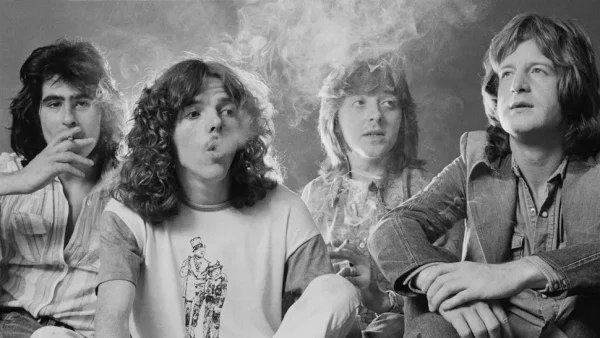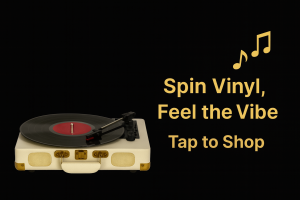Badfinger Baby Blue Breaking Bad: The 1972 Hit That Returned
When the final credits rolled on Breaking Bad in September 2013, more than 10 million viewers heard something unexpected. A sweet, melancholic power pop song from 1972 suddenly became the perfect soundtrack to Walter White’s tragic end. This wasn’t just any classic rock track. It was Badfinger Baby Blue Breaking Bad’s most memorable moment, transforming a forgotten gem into an instant phenomenon that would introduce an entirely new generation to one of rock’s most talented but troubled bands.

📚 Table of Contents
How Vince Gilligan Created Television’s Most Perfect Song Placement
The story of Badfinger Baby Blue Breaking Bad’s finale is one of artistic vision meeting perfect timing. Series creator Vince Gilligan knew exactly what he wanted, even when his music team didn’t agree. Music supervisor Thomas Golubić kept suggesting alternative songs with blue themes, but Gilligan politely rejected every single one.
Golubić admitted he initially thought it was an odd choice. When Gilligan first proposed using the track, Golubić didn’t hear the connection. He thought it was just a quirky little love song from the seventies. But everything changed when the dailies arrived with that stunning crane shot moving over Walter White’s body.
The brilliance became immediately clear. This wasn’t a story about a criminal or a murderer. It was a love story between Walt and his greatest achievement as a chemist. As Gilligan explained, Walter was with that meth lab he designed, his baby, and the lyrics backed that up perfectly. In those final moments, Walt was finally at peace with himself.
The Heartbreak Behind the Song: Pete Ham and Dixie Armstrong
The original inspiration for this classic rock song came from a very different kind of heartbreak. Songwriter Pete Ham wrote the track about Dixie Armstrong, a Southern singer he met during Badfinger’s 1971 US tour. Joey Molland remembered how it all started. She came to one of their shows, got talking with Pete, and he really liked her.
Nobody knows if they fell in love right away, but Pete invited her on the road with them and she came along. She even traveled back to England with the band. But the demands of the music industry created distance between them. The band spent countless hours in the studio and doing gigs, and Dixie wasn’t really into that side of their lives.
What made things worse was Pete’s failure to call her when he was away. The band members were just a bunch of guys who didn’t sit around discussing romantic relationships. That lack of communication became the catalyst for one of power pop’s most beautiful expressions of regret. The opening line captures it perfectly: acknowledging he got what he deserved for keeping someone waiting too long.
Todd Rundgren’s Production Magic
The production story behind this track involves some serious rock and roll royalty. George Harrison initially started producing the Straight Up album, creating hits like “Day After Day” before having to step away for the Concert for Bangladesh. That’s when Todd Rundgren entered the picture.
Rundgren brought a different philosophy to the sessions. While Harrison had pursued a big Phil Spector kind of production, Rundgren wanted to return to engineer Geoff Emerick’s original vision of capturing Badfinger live in the room. Molland recalled that Rundgren was pretty rude to them, telling the band he didn’t think they could play very well. Despite the tension, Rundgren delivered brilliantly.
The band recorded the song the same day Ham brought it in. Pete had written it on acoustic guitar with some ideas for linking licks. Joey Molland took over that job, they ran through it a few times, recorded it, then did a couple of overdubs to fatten up the sound. The result became their biggest album.
Before its US release in March 1972, the track got an additional remix. Al Steckler at Apple US felt it needed a stronger hook in the opening, so engineer Eddie Kramer applied heavy reverb to the snare drum during the first verse and middle eight. That remix became the version that reached number 14 on the Billboard Pop Singles chart.
The Breaking Bad Effect: 9,000% Spike in Streams
The numbers tell an incredible story. The night of the Breaking Bad finale, more than 5,000 downloads were purchased within hours. Spotify streams jumped a staggering 9,000 percent in just the first 11 hours after the episode aired. The song leaped to number 16 on the iTunes chart, becoming a top seller overnight.
For the first time ever, the track charted in the UK, reaching number 73. It also hit number 35 in Ireland. According to Nielsen Soundscan, the song appeared on the Billboard Digital Songs chart at number 32 the week ending October 19, 2013. A TV show about a drug-dealing high school chemistry teacher was suddenly breaking Badfinger all over again.
Bruce Resnikoff, president of Universal Music Enterprises, recognized the significance. One of the great things about the digital age is the immediate results. The label used social media to connect the song to the show and increase awareness to a wide market. This classic rock news demonstrated how a perfectly placed song could find new life decades later.
The context couldn’t have been more different from what Pete Ham imagined when writing an apology to an estranged girlfriend. The opening line about getting what you deserve applied both to Ham’s romantic situation and Walter White’s rueful, bloody end. But there’s also something decidedly ironic about using a love song to a girl as Walt’s final love song to his beloved blue meth.
The Tragic Story of Classic Rock Artists Badfinger
The band’s history reads like a Greek tragedy. As the first post-Beatles group signed to Apple Records, their sound, looks, heritage, and support positioned them as potential heirs to the Fab Four throne. Paul McCartney wrote and produced their breakthrough single “Come and Get It.” George Harrison produced hits and used them as his backing band for All Things Must Pass and the Concert for Bangladesh.
They also penned “Without You,” which became an even bigger hit for Harry Nilsson. Everything seemed to point toward rock and roll renown. But the track that soundtracked Walter White’s demise became their last major hit.
Despite being assigned a release number for the UK, the song wasn’t even issued as a single there. Though it reached number 14 in the US, Badfinger’s time at Apple was ending. Their three albums up to and including Straight Up sold steadily, but their final Apple LP, 1974’s Ass, suffered from legal problems.
Less than a year into an ill-advised deal with Warner Bros, and with financial irregularities surrounding the group and their fraudulent manager Stan Polley, Pete Ham hanged himself in 1975. He was 27 years old. Eight years later in 1983, bassist Tom Evans also took his own life. The tragedy gives the Breaking Bad revival a bittersweet quality. These gifted artists who left too early finally got new life breathed into their music.
Joey Molland’s Reaction to the Finale
Watching from his home in Minnesota that September night in 2013 was Liverpool-born guitarist Joey Molland, the sole surviving member of the band’s classic lineup at that time. He only found out that day they were going to use the song, so while surprised, he wasn’t stunned.
Molland noticed the mix was different, as was the way they edited the whole thing, but he thought it was great. He took to Twitter to express his excitement about the song’s use in the finale and began retweeting news articles about it. The response was overwhelming. More gigs started coming in, creating a throwback to the old days.
The resurgence left Molland with mixed feelings. While grateful for the renewed interest in classic rock, he acknowledged that on a practical level, nothing really changed for him financially. The band’s complicated legal history meant that even this massive exposure didn’t translate to the kind of windfall one might expect.
Molland continued touring under the Badfinger name for years, keeping the music alive for fans old and new. Sadly, Joey Molland passed away in March 2025 at age 77, marking the end of an era as the last surviving member of one of rock’s most underappreciated bands.
🎸 ESSENTIAL BADFINGER ALBUMS 🎸
Discover the legendary power pop sound that influenced generations
🎵 Straight Up
The Album That Changed Everything
The 1971 masterpiece that features the iconic track heard in Breaking Bad’s finale.
Produced by both George Harrison and Todd Rundgren, this album represents the peak of Badfinger’s creative powers.
Essential listening for any fan of classic rock or power pop, containing some of the most beautiful melodies ever recorded.
🎤 No Dice
Where Power Pop Was Perfected
The 1970 breakthrough featuring Joey Molland’s guitar magic and the original version of their Grammy-winning composition.
Contains the Top 10 single “No Matter What” and showcases the band’s ability to craft perfect pop-rock melodies.
This remastered edition includes rare bonus tracks that reveal the depth of their songwriting talent.
💿 The Very Best of Badfinger
The Ultimate Introduction
A comprehensive collection that captures the essence of one of rock’s most underrated bands.
Features all their biggest hits including the track that became synonymous with television’s greatest drama finale.
Perfect for newcomers discovering the band through Breaking Bad or longtime fans wanting the definitive compilation.
🎸 SUPPORTING CLASSIC ROCK HISTORY 🎸
When you purchase through the links above, you help support this site and keep classic rock stories alive. Each purchase contributes to maintaining this platform dedicated to preserving the legacy of legendary artists like Badfinger. Thank you for supporting independent music journalism!
Why Does Badfinger Baby Blue Breaking Bad Still Resonate?
The enduring appeal of this moment in television history speaks to something deeper than just a well-chosen song. It represents the collision of two tragic stories: Walter White’s descent into darkness and Badfinger’s own heartbreaking journey through the music industry.
Both stories involve brilliant creators undone by their circumstances. Walt’s genius as a chemist becomes corrupted by pride and desperation. Badfinger’s songwriting gifts were squandered by fraudulent management and industry chaos. The parallel gives the finale’s musical choice an unexpected depth that rewards repeated viewing.
For music fans, the Breaking Bad finale served as a powerful reminder of classic rock’s enduring power. In an era of streaming and algorithm-driven playlists, a television show introduced millions to a band they’d never heard before. The song’s journey from 1972 hit to forgotten track to cultural phenomenon demonstrates how great art can find new audiences decades later.
Todd Rundgren, looking back years later, expressed hope that the revival brought some recognition to a band that deserved so much more. The band’s history is filled with “what if” moments and “if only” scenarios. The Breaking Bad placement couldn’t change their tragic past, but it did ensure their music would reach far beyond what they achieved in their brief time together.
The Legacy Lives On
The story of Badfinger Baby Blue Breaking Bad isn’t just about a TV show using a great song. It’s about art transcending time, about how perfect creative choices can create meaning neither the original artist nor the later curator could have fully anticipated. When those final guitar notes faded out on September 29, 2013, they marked the end of television’s greatest drama while simultaneously beginning a new chapter for a nearly forgotten band.
Pete Ham wrote a song about lost love and regret. Vince Gilligan repurposed it as an ode to a chemistry teacher’s twisted devotion to his blue meth. The combination created one of the most memorable moments in television history, proving that great songs never truly die. They just wait for the right moment to find us again.

